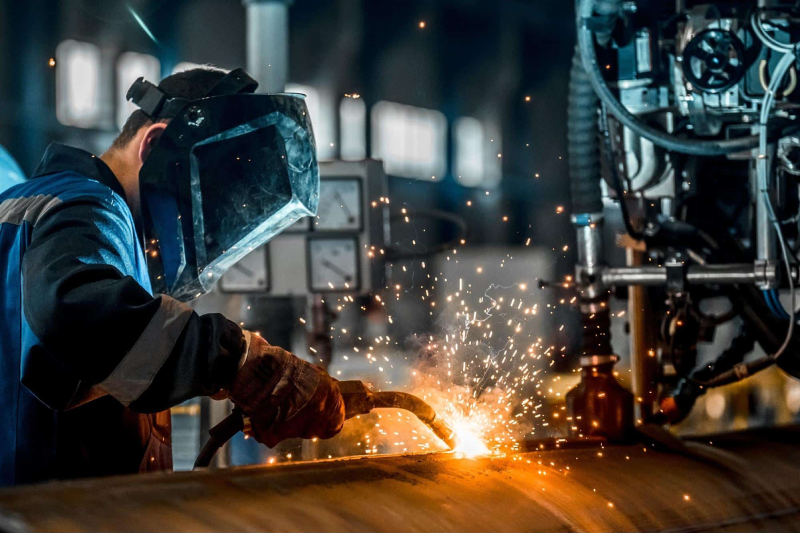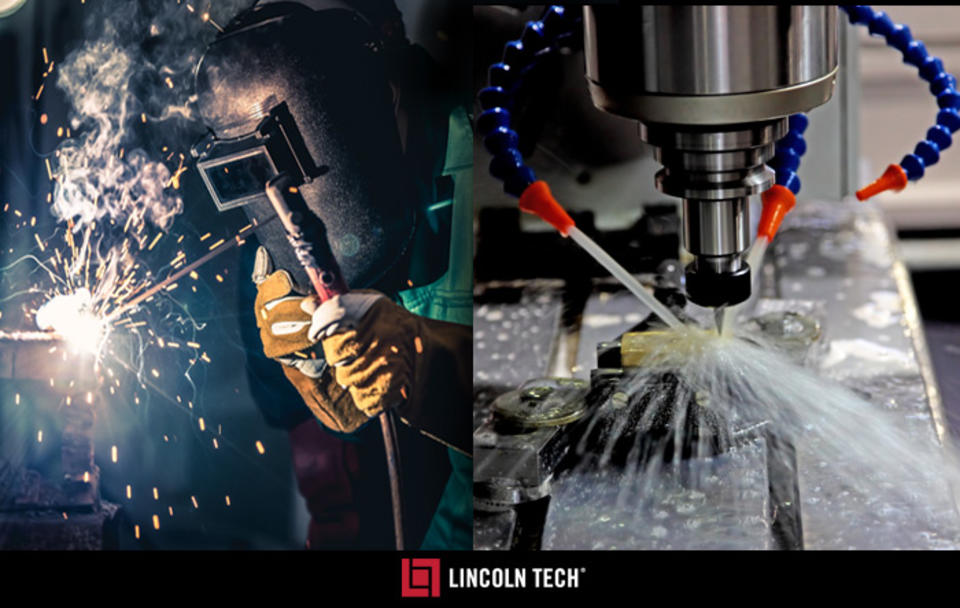All About Welding: Trick Insights Into Techniques and Finest Practices for Success
Welding includes a range of methods, each suited for certain materials and applications. Recognizing these methods, such as GMAW, SMAW, and TIG, is vital for accomplishing excellent results. The ideal devices and safety methods can not be forgotten. As prep work and repairing play vital roles in the welding procedure, mastering these elements can greatly improve the high quality of the end product. What are the key elements that assure an effective weld?
Recognizing Various Welding Techniques
Welding techniques include a variety of approaches, each fit to details applications and materials. Among the most usual methods are Gas Steel Arc Welding (GMAW), Protected Metal Arc Welding (SMAW), and Tungsten Inert Gas Welding (TIG) GMAW, also known as MIG welding, is preferred for its speed and adaptability, making it suitable for slim products. SMAW, or stick welding, is preferred for its simpleness and efficiency in outdoor environments, especially with thicker metals. TIG welding supplies accuracy and control, making it appropriate for intricate work and non-ferrous metals (Belgrade Fabrication). Each strategy has its unique advantages and considerations, allowing welders to select the very best approach based upon the project's needs, product kind, and preferred outcomes. Comprehending these methods is necessary for effective welding
Important Welding Tools and Devices
While different welding strategies require particular skills, the appropriate equipment and tools are just as necessary for achieving high quality outcomes. Important welding tools consists of welding makers, which vary depending on the strategy-- such as MIG, TIG, or stick welding. Protective gear, including gloves, helmets, and aprons, guarantees safety and comfort throughout the procedure. On top of that, clamps and components aid safeguard products in position, making sure accuracy in welds. Consumables like welding poles, wire, and protecting gas are additionally crucial elements that affect the quality of the weld. Devices such as cutters and mills facilitate surface prep work and post-weld completing, adding to an expert end result. Purchasing high-grade devices eventually enhances the effectiveness and performance of welding tasks.
Security Practices in Welding
Correct safety and security practices are essential in the welding sector to safeguard workers from possible hazards. Welders need to put on appropriate individual safety tools (PPE), including helmets with appropriate shading, handwear covers, and flame-resistant garments. Appropriate air flow is crucial to lower direct exposure to harmful fumes and gases produced throughout the welding procedure. Additionally, workers should be learnt the correct handling of welding tools to protect against accidents. Fire safety measures, such as maintaining combustible products away from the welding location and having fire extinguishers conveniently available, are essential. Routine inspections of equipment and work areas can aid determine possible hazards prior to they bring about accidents. By sticking to these safety and security practices, welders can create a more secure working atmosphere and reduce dangers connected with their trade.
Readying Materials for Welding
Preparing products for welding is an essential step that considerably affects the high quality and integrity of the final product (Montana Mobile Welding and Repair Belgrade Fabrication). Proper prep work involves cleansing the surfaces to remove impurities such as dirt, oil, and corrosion, which can compromise the weld. Techniques such as grinding, sanding, or using solvents are typically used to attain a tidy surface area. Additionally, guaranteeing that the materials mesh comfortably is essential; gaps can result in weak welds. It's additionally crucial to take into account the alignment and positioning of the parts, as this will affect the simplicity of welding and the last result. Picking the suitable filler product and making certain compatibility with the base steels is vital for attaining strong, long lasting welds.
Tips for Getting High-Quality Welds
Attaining high-grade welds calls for interest to detail and adherence to ideal techniques throughout the welding process. Proper joint preparation is necessary, guaranteeing surfaces are totally free and clean from pollutants. Picking the proper filler material and welding strategy based on the base steels is essential for excellent bonding. Preserving constant traveling speed and angle while welding can stop problems and promote uniformity. In addition, managing heat input is crucial; too much warmth can cause bending and deteriorated joints. Frequently checking the welds during the process permits instant modifications if essential. Ultimately, best flux core wire using suitable post-weld therapies, such as cleansing and anxiety alleviation, can enhance the toughness and honesty of the weld, eventually making certain an effective end result.
Fixing Common Welding Issues
Welding commonly presents challenges that can affect the quality and honesty of the last item. Typical concerns such as porosity, inconsistent weld grains, and getting too hot can arise, each calling for specific troubleshooting methods. Comprehending these issues is essential for welders to boost their abilities and accomplish ideal results.
Porosity Issues Discussed
Although porosity can commonly be ignored, it stays a crucial concern in welding that can endanger the integrity of a finished item. Porosity describes the presence of little gas pockets within the weld bead, which can lead and compromise the joint to early failure. This problem usually arises from pollutants, moisture, or improper protecting gas coverage throughout the welding process. To reduce porosity, welders need to verify that the base materials are clean and dry, utilize appropriate securing gases, and maintain regular welding criteria. Routinely checking the tools and atmosphere can also assist recognize potential problems before they materialize in the weld. Addressing porosity properly is vital for achieving strong, long lasting welds that fulfill quality standards.

Inconsistent Weld Beads
Irregular weld beads can substantially impact the high quality and stamina of an ended up item. Various elements contribute to this concern, including improper travel rate, inaccurate amperage setups, and irregular electrode angles. When the welder moves as well rapidly, a grain may show up slim and lack infiltration, while moving also slowly can create too much build-up. Furthermore, using the incorrect amperage can result in either damaging or excessive spatter, both of which compromise weld stability. The welder's strategy, such as inconsistent torch activity, can likewise lead to irregular bead appearance. To alleviate these troubles, welders ought to concentrate on preserving steady, regulated activities and making sure proper devices setups to achieve harmony in their welds. Uniformity is essential this post to accomplishing strong and trusted welds.
Getting Too Hot and Bending Issues
Excessive heat during the welding procedure can bring about substantial overheating and deforming problems, affecting the structural stability of the work surface. These problems usually manifest as distortion, which can endanger placement and fit-up, making further assembly challenging. Aspects adding to overheating consist of the choice of welding criteria, such as voltage and travel rate, along with the type of material being bonded. To mitigate these problems, welders need to keep constant traveling speed and ideal warmth input while monitoring the workpiece temperature. Additionally, pre-heating or post-weld warm treatment can help ease stresses triggered by fast cooling - Montana Mobile Welding and Repair Welding. Routine inspection and adherence to ideal techniques are essential in protecting against overheating and guaranteeing the longevity and reliability of welded structures
Regularly Asked Inquiries
What Are the Occupation Opportunities in the Welding Market?
The welding industry supplies diverse profession possibilities, consisting of settings as welders, examiners, designers, and teachers. Professionals can operate in production, building, aerospace, and automotive fields, taking advantage of strong demand and competitive incomes in different duties.
How Can I Enhance My Welding Rate Without Compromising Top Quality?
To boost welding rate without giving up top quality, one ought to practice reliable strategies, preserve tools, enhance setups, and boost hand-eye sychronisation. Regular training and looking for feedback can also significantly add to achieving quicker, top quality welds.
What Qualifications Are Readily Available for Welders?
Various qualifications exist for click to read welders, consisting of those from the American Welding Society (AWS), the National Facility for Building And Construction Education and Research Study (NCCER), and numerous industry-specific organizations. These qualifications enhance employability and demonstrate skill proficiency.
Just How Does Welding Affect the Residences of Metals?
Welding affects the residential properties of steels by altering their microstructure, which can lead to modifications in ductility, hardness, and toughness. Heat input and cooling prices throughout the process substantially impact these product features.
Can I Weld Dissimilar Metals With Each Other?
